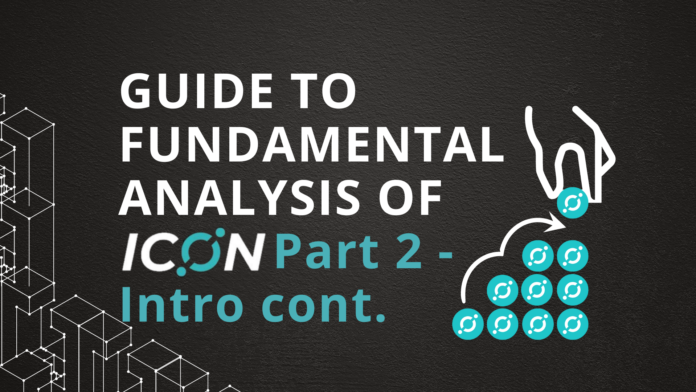The Iconist is running a nine-part series dedicated to fundamental analysis of ICON, exploring how ICON is a fundamentally strong project and how it can be improved.
Fundamental analysis of a blockchain project such as ICON provides a lot of information in terms of strength, how it compares to competitors, the value of ICX and its potential in terms of future growth. This analysis can prove useful to all ICON stakeholders, including the development team, investors, partners and traders.
To read Part 1 of the Guide to Fundamental Analysis, click here.
Why is fundamental analysis especially important for cryptocurrencies?
Being the medium of decentralized networks, cryptocurrencies exhibit volatility, show short-term results and can quickly shift. Their market value and performance may not always reflect their real value.
Therefore, conducting a fundamental analysis is especially important for cryptocurrencies as the market is unregulated — you’ll find no standardized reports as with publicly listed companies — which makes them potentially risky investments. Furthermore, being decentralized, no single entity runs a project, making them unpredictable.
Fundamental analysis offers trustworthy information that can determine the true value of a cryptocurrency and the potential of a blockchain project.
There’s no single measure to assess a network fully. To tackle this, a combination of metrics can provide a foundation for the creation of indicators that can be used in FA.
What are some aspects that are unique to a blockchain project?
As each blockchain project uses different consensus algorithms with their own mechanisms, it is crucial to use personalized fundamental analysis for each project. Financial metrics come from several sources, including websites, public data and project reports.
Project Metrics
- Whitepaper – these documents provide an overview of a project, including technological descriptions, potential use cases, roadmaps and schematics for coin economics.
- Team record – a project is often only as good as the people behind it. Indeed, VCs often invest in teams rather than projects. Fundamental analysis looks at a network’s developers and members, including their previous experience and industrial success. Less savory incidents such as scandals are also noted.
- Competitors – who are the other players in the space, and how are they doing?
- Tokenomics – how are the coins used? What is the network’s fiscal policy?
- Initial distribution – This examines how coins were originally distributed. In cases such as ICON, this means an ICO.
Blockchain Metrics
- Transaction count – measure of activity taking place in a network.
- Transaction value – how much value has been transacted within a given period.
- Active addresses – blockchain addresses that are active in a given period.
- Fees paid – the demand for block space as users compete with each other to confirm transactions and receive awards.
- Hash rate – measure of network health i.e. the speed and efficiency at which hardware must operate in order to mine.
- Amount staked – number of users who stake their own holdings to participate in block validation.
Financial metrics
- Market capitalization – essentially, circulation x current coin price. This is how much it would cost to buy up every single coin in the network.
- Liquidity – measure of how easily an asset can be bought or sold.
- Volume – helps determine liquidity.
- Supply mechanisms – How many coins can the public buy, determined by maximum supply, circulating supply and inflation rate.
Project metrics refer to the overall quality of the project, blockchain metrics provide information about how on-chain technology works and financial metrics give insight into the project’s asset.
Indicators
Indicators combine multiple metrics using statistical formulas to create values that are easy to read and draw comparisons from.
Useful indicators include Network Value to Transactions Ratio, Market Value to Realized Value Ratio and Stock-to-flow model.
All these metrics and indicators combined allow fundamental analysis to provide valuable insights into analysing blockchain projects and understanding the financial health of assets. When combined with technical analysis, it can attach a true value to a project, as well as determine its credibility and potential.
Advantages of fundamental analysis
Fundamental analysis lets investors and network partners collect and analyze external information regarding a project. It also provides a comprehensive understanding of the true value of a particular asset, which enables investors to better predict the asset’s future value.
Members and developers also have a clearer vision of where the project is headed and what they can do to improve.
Disadvantages of fundamental analysis
Some metrics do not fit into any categories stated above, such as sociopolitical factors like uncertainty over politics and social movements, government regulations and media coverage.
External events also partly determine a currency’s value, but are practically impossible to predict. Cryptocurrencies are notoriously quick to respond to external events, though good fundamental analysis can help investors predict how well a project might handle external stresses.
Fundamental analysis requires seasoned analysts who know what they are talking about, particularly in accounting, business and blockchain technology.
Fundamental analysis is a time consuming process, requiring much study, research and analysis. That means investors may have to wait.
Accurately determining certain key metrics requires a bit of art in addition to science.






